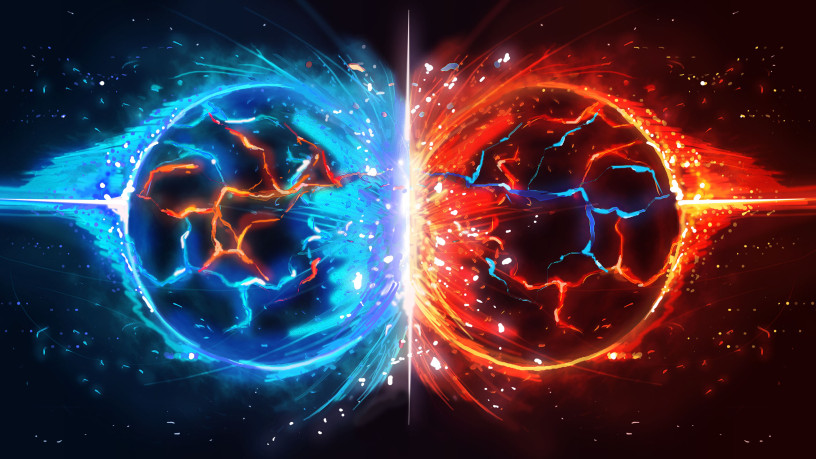Some Fascination With Antimatter !!
Some Fascination With Antimatter !!
Written By Mr Tyler Horoho(IG:Strange_Antiquark)
All of US Love Quantum Physics!! maybe not but the eagerness to understand the mystery of matter,antimatter and exotic matter is deep down there.
Quantum mechanics is very fascinating when it comes to the things which are unbelievable.
Today We're Going To unveil One Such Mystery! Called....
Antimatter!
What
is Antimatter?
Antimatter was theorized
by Paul Dirac in 1928 and first discovered in 1932 by Carl Anderson when
positrons were found in cosmic ray tracks. If you don’t know what antimatter
is, it has almost all the same properties as normal matter but with opposite electric
charge. So an antielectron (more often called a positron) has the same mass,
spin properties, size, and everything else as an electron, but with an opposite
electric charge. Some particles can be their own antiparticle, like the
charge-neutral photon (so there is no anti-photon). Another important thing
about antimatter is that when it interacts with regular matter of the same
kind, the two annihilate each other and leave behind pure energy in the form of
photons.
Since the Discovery...
Since the discovery of
antimatter in 1932, we have extensively studies antimatter and its properties.
At the Large Hadron Collider, we have created anti-hydrogen, an atom made of an
anti-proton and a positron. Remarkably, anti-hydrogen behaves exactly the same
way as hydrogen. This leads us to suspect that we would not be able to tell the
difference between matter and antimatter if they don’t interact with each
other. So in theory, there could be a whole galaxy out there completely made of
antimatter, and we wouldn’t be able to tell the difference from just looking at
it.
Matter And Antimatter
So how do we know that’s
likely not true? As I mentioned earlier, matter and antimatter destroy each
other in bright, energetic explosions. If there is a galaxy completely made of
antimatter, there will have to be a border where everything switches from
matter to antimatter. At this border, we would see high energy radiation from
the annihilation of matter and antimatter. But we don’t see that anywhere in
the universe. Other than trace amounts created in some radioactive decays, our
universe is devoid of antimatter.
What happened to all the Antimatter?
What happened to all the
antimatter? The laws of physics as we know them give us no clear explanation
for why the universe created more matter than antimatter. To this day, it is
still one of the biggest unsolved problems in physics. There are theories which
can explain this asymmetry, but none of them have been experimentally verified.
To explain the asymmetry, these theories make use of a weird property of the
universe called charge-parity (CP) violation.
Remember in the opening
paragraph I said antimatter behaves almost the same way as matter? We used to think that
the outcome of an experiment shouldn’t change if the particles involved were
switched with their antiparticles (the “C” in CP) and the coordinates were inverted,
like looking in a mirror (the “P” in CP). But we learned from experiments in
the 1960’s that antiparticles behave slightly differently than their particle
counterparts in some radioactive decays. This difference
is what’s called CP violation, and it could help explain why there’s no
antimatter. From these experiments we know there is some CP violation in the
universe, but it’s not enough to explain the amount of matter we see.
One experiment that could
explain the matter-antimatter asymmetry is finding the neutron’s electric
dipole moment (EDM). The neutron EDM violates CP symmetry, and in the range it
is being measured now it could fill in a lot of the gaps in our CP violation
puzzle. I have provided more information about how this works and how difficult
the neutron EDM is to measure in a post on my Instagram account called “How
neutrons could explain the Universe’s matter-antimatter asymmetry”.
Comment Your Opinion On Matter And Antimatter.
Keep Spreading The Intellectualism!!!



Comments
Post a Comment